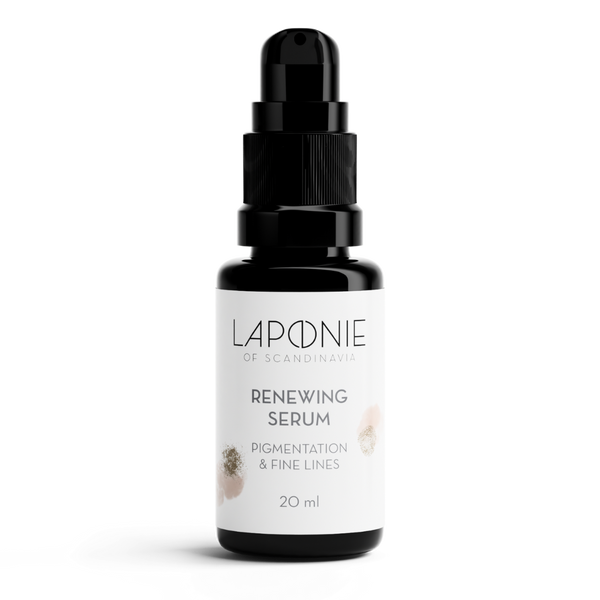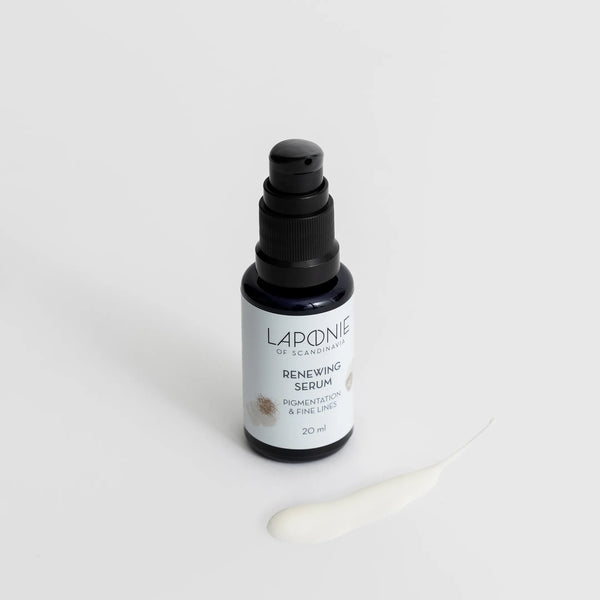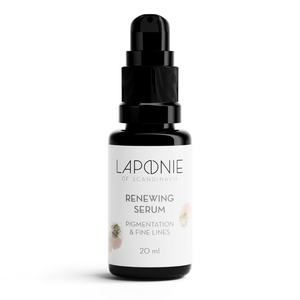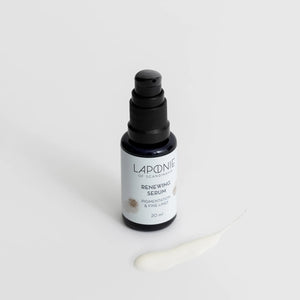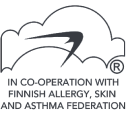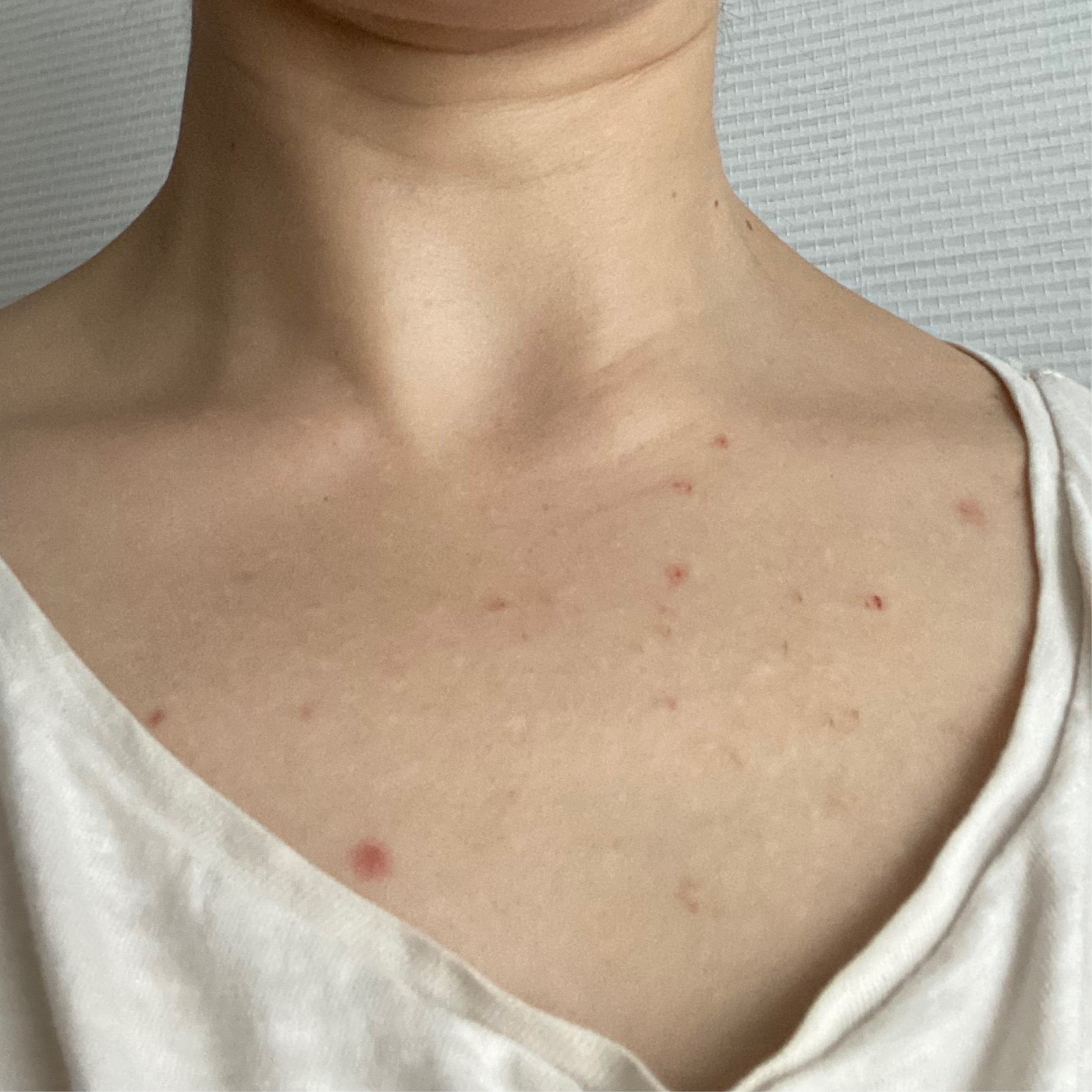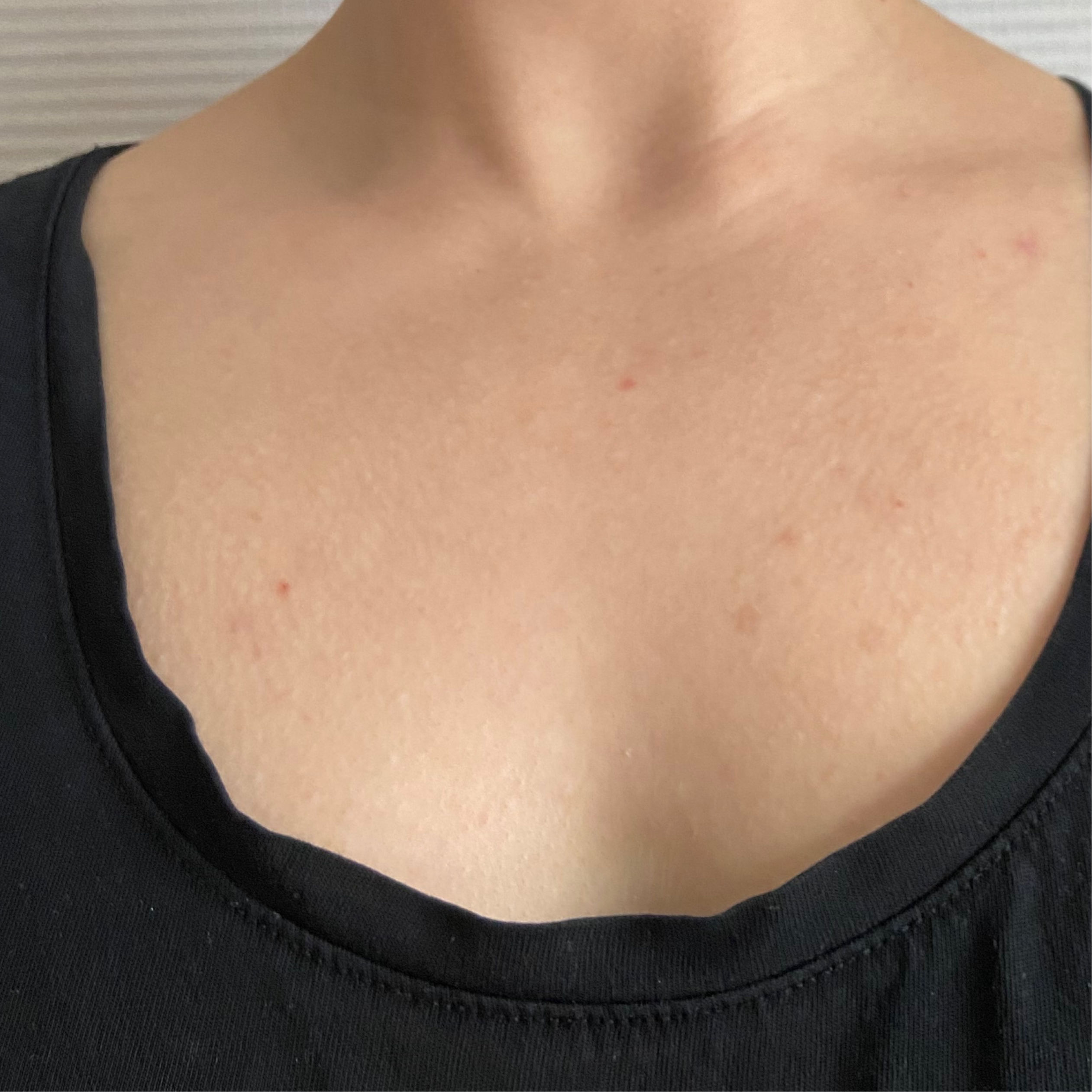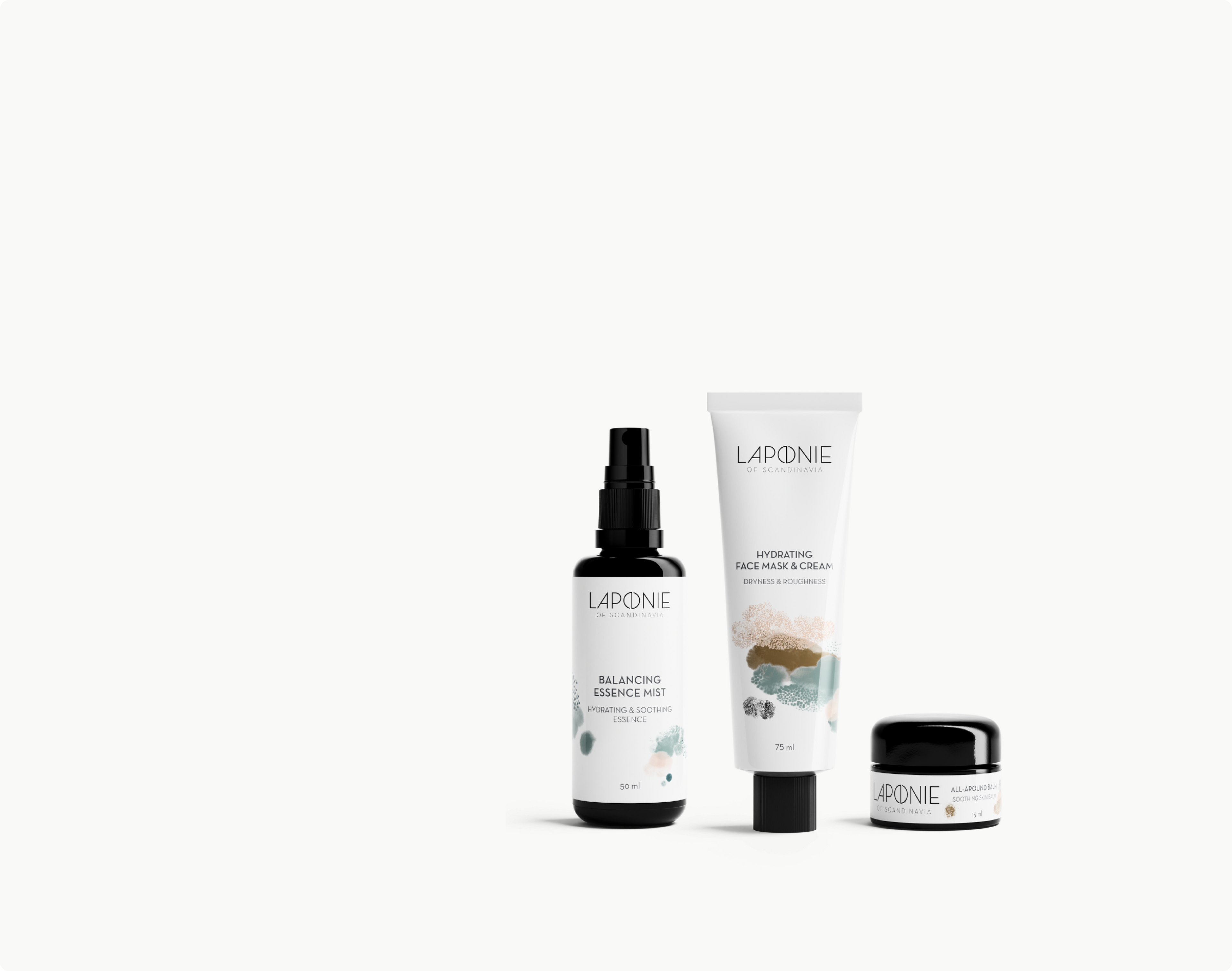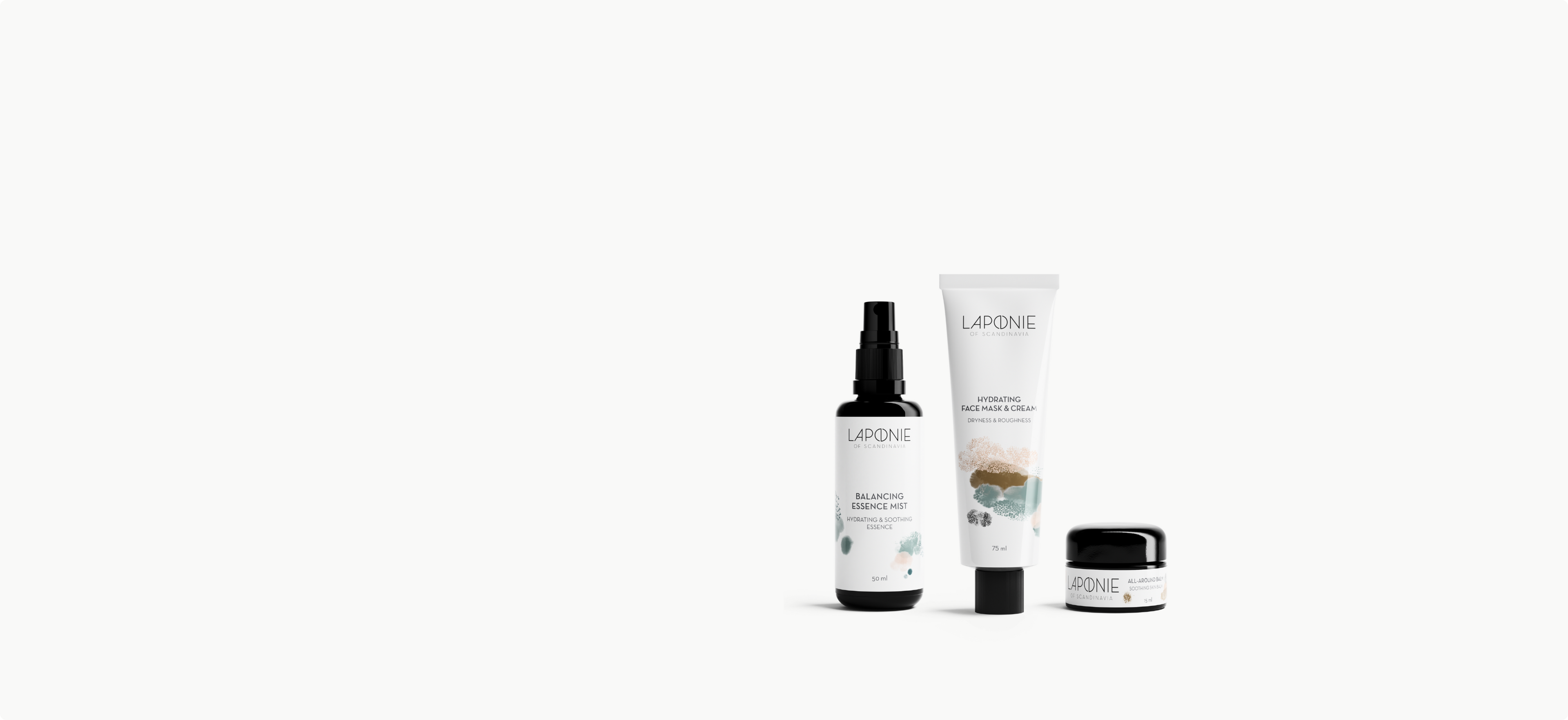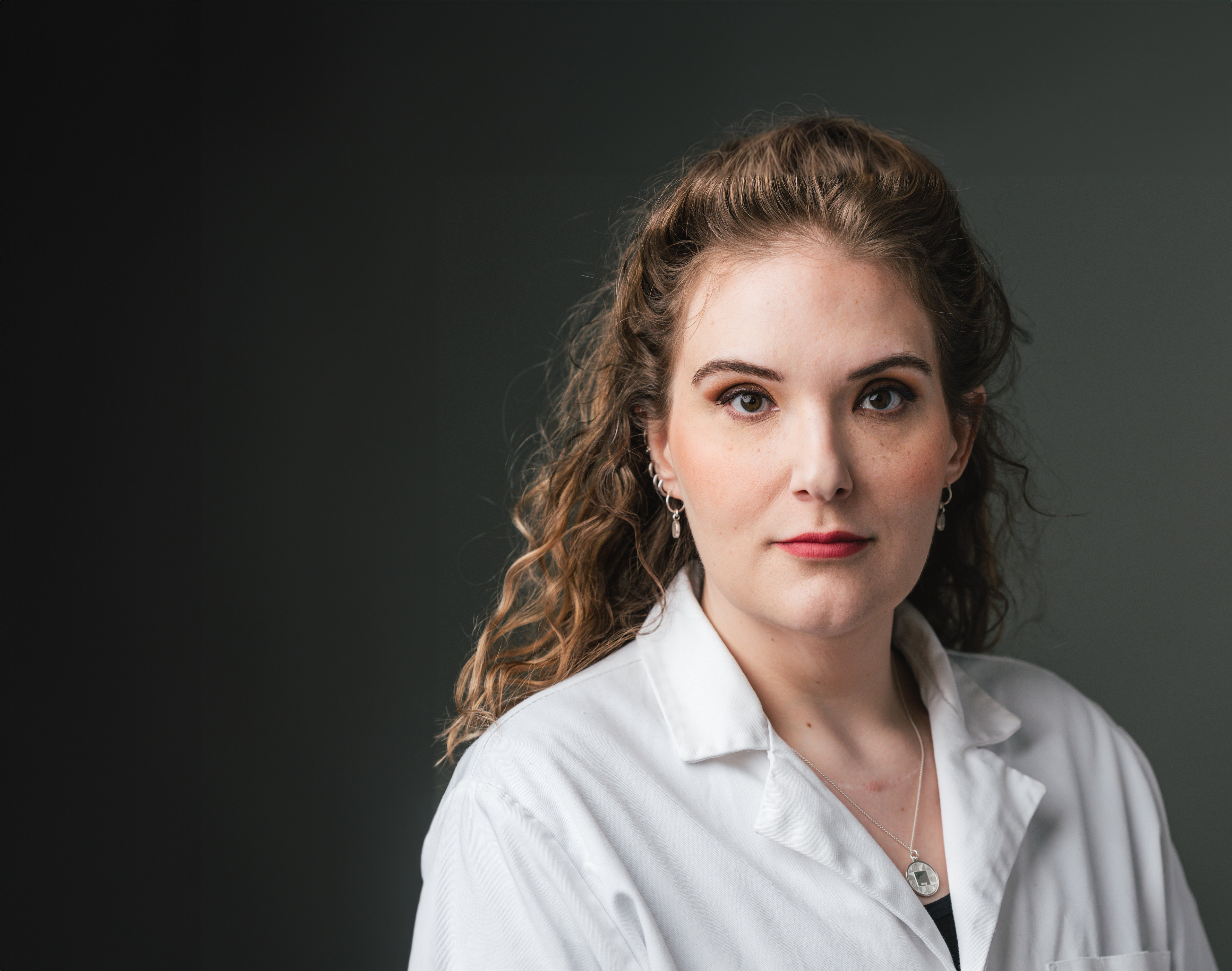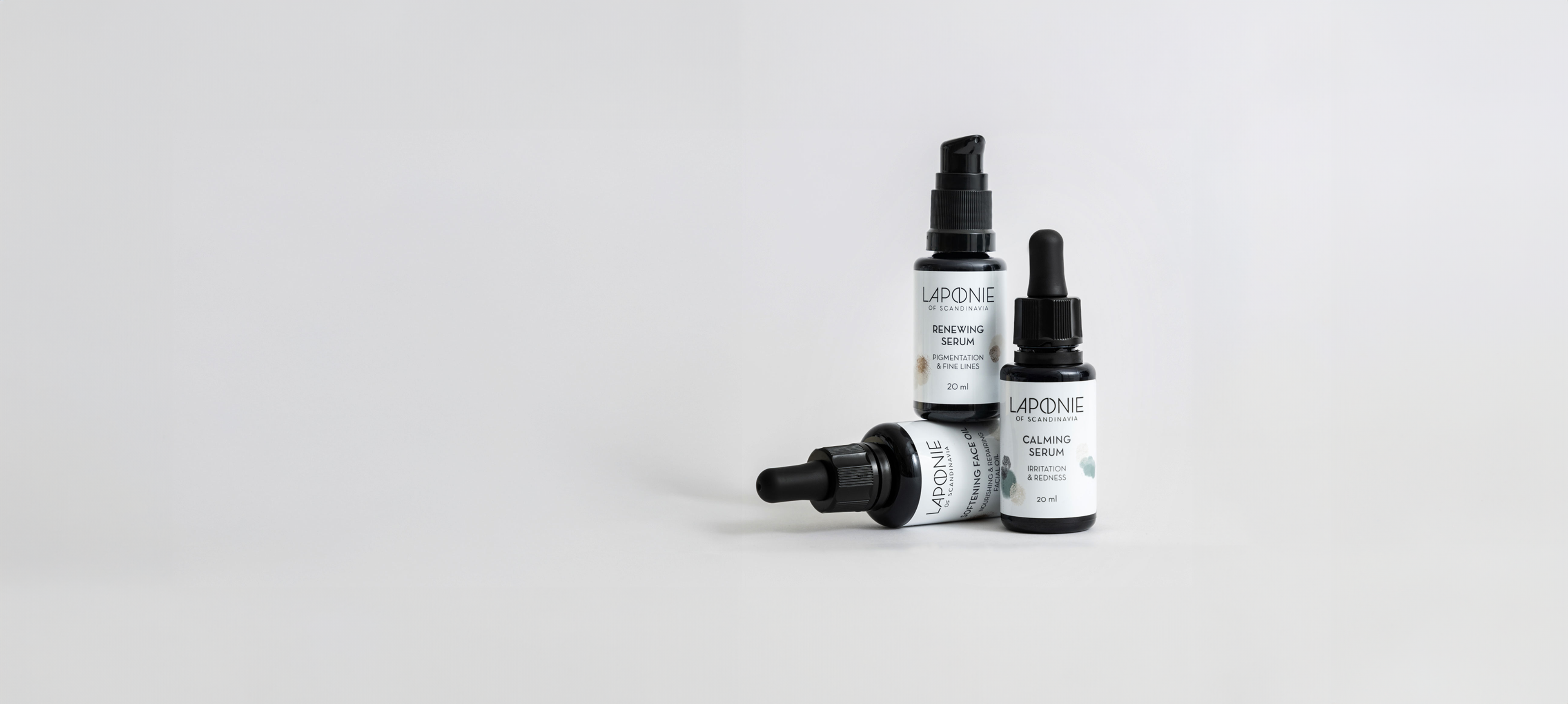
Renewing Serum
- Tackles fine lines znd pigmentation with bakuchiol, which has retinol-like properties, but without the irritation associated with retinol. Apply to clean skin after Essences, before creams, Oil or Balm.
- Skin type/concern: all skin types, mature skin, dull skin, uneven skin, fines lines and wrinkles, pigmentation, acne and impurities on drier skin.
- Developed for sensitive and problem skin without added fragrance, alcohol and fatty alcohols. Allergy-labelled.
-
Free sample with all orders.
-
Delivery: Finland 1-4 business days & rest of EU 2-7 business days.
-
Free delivery: Finland orders over 38€ & rest of EU 58€.
-
Safe payments.
Our Renewing Serum for sensitive and problem skin is a nourishing but light emulsion-serum to gently brighten and renew skin and tackle pigmentation, fine lines, dryness and signs of aging. Skin is left feeling nourished and smooth.
Bakuchiol possesses retinol-like properties, but without the irritation often associated with retinols. It renews, fades discoloration and improves skin tone. Argan oil and plant-derived glycerin combat dullness and dryness, and bisabolol soothes and heals.
The Renewing Serum is our top pick for sensitive aging skin, and works equally for dry, oily and combination skin. It's also a great primer for sensitive and problem skin.
Aqua, Argania Spinosa Kernel Oil, Glycerin, Glycine Soja Seed Extract, Bakuchiol, Bisabolol, Helianthus Annuus Seed Wax, Tocopherol, Xanthan Gum , Acacia Senegal Gum, Sodium Levulinate, Potassium Sorbate, Citric Acid, Phytic Acid
Aqua
Solvent. Water. The main vehicle for our water based products
Argania Spinosa Kernel Oil
Emollient and skin conditioning. Argan oil. A staple for us. It is obtained from the non-roasted organic kernels of Moroccan Argania Spinosa, i.e. argan nuts. We love it in almost everything, and especially like its repairing qualities. It is slightly higher in oleic acid, but is usually suitable for clog prone skin, as it contains a fair amount of lupeol, a triterpenoid with anti-inflammatory benefits.
Glycerin
Humectant and skin protecting. Technically a sugar alcohol, glycerin is one of the oldest, most common and most versatile humectants used in cosmetics. It moisturises and protects the skin, accelerates skin barrier recovery and has antimicrobial properties, among other things. For our Cream we use vegetable, rapeseed-derived glycerin.
Glycine Soja Seed Extract
Emulsifier and skin conditioning. An emulsifier, put simply, enables the mixing of water and oil into an emulsion. This particular one is extremely mild, non-allergenic, and non-irritating, suitable for delicate and sensitive skin. It's a natural, plant-based and highly stable lysophospholipid extracted from a non-GMO soybean source, which is also able to reduce transepidermal water loss (TEWL), maintaining moisture in the skin and strengthening the integrity of the skin barrier. Bonus: it also enhances collagen and elastin production.
Bakuchiol
Antimicrobial, antioxidant and skinconditioning. Bakuchiol, derived from the psoralea corylifolia seed, is a true sensitive and problem skin multitasker. It works wonders on pigmentation but is also takes care of fine lines, congested skin and breakouts. Bakuchiol is often compared to retinol in terms of efficacy, and research shows it to be as efficient as retinol in treating e.g. acne, but without irritation. There has been abundant discussion on whether bakuchiol is sustainably harvested, and to make sure, we took one year off for the Renewing Serum to ensure this: we commissioned a bachelor's thesis on the subject. Conclusion: yes, bakuchiol is sustainably harvested.
Bisabolol
Soothing, anti-inflammatory and anti-microbial agent. Bisabolol. A colorless viscous oil that is the main constituent of German chamomile essential oil. The bisabolol we use is organic, and produced not from chamomille but from the South American Candeia tree, and contains no farnesol, a potential fragrance allergen. Helianthus Annuus Seed Oil Sunflower seed oil. Emollient. Sunflower oil is widely used in skincare and in this particular case it forms the base for the tocopherol (vitamin E) we use in the product. Sunflower seed oil on its own has a high concentration of natural vitamin E, and is especially well suited for dry and dehydrated skin, due to a high linoleic acid content (at around 60%), which aids in strengthening the skin barrier.
Helianthus Annuus Seed Wax
Emollient and thickener. Sunflower wax. A hard vegetable wax made through the winterisation of sunflower seed oil. We use it for solidity and a light feel. Sunflower oil on its own is a basic, widely used and well tolerated oil for skincare. The kind we favour is high in linoleic acid, and the wax we use is made from high linoleic sunflower oil.
Tocopherol
Antioxidant. Vitamin E. A common antioxidant for fats and oils used in skincare. We use the vegetable kind, derived from soybean and rapeseed to prevent rancidity in our balm.
Xanthan Gum
Thickening, gel forming and emulsion stabilising. A natural and commonly used mainly thickener and gelling agent in cosmetics, xanthan gum is a polysaccharide produced through Bacterial fermentation of pure culture Xanthomonas Campestris with protein and carbohydrate sources, in this case from soy or corn. In our Cream, it is combined with sclerotium gum, lecithin, pullulan and silica to lend that lovely gel meets cream feel.
Acacia Senegal Gum
Film forming. Also known as gum arabic, acacia gum is a natural gum consisting of the hardened sap of two species of the acacia tree. In cosmetics, acacia gum is used for it's ability to create less stringy, or slimy and sticky, gels. The acacia gum we use is ethically and sustainably handpicked in Africa, and is a 100% renewable raw material.
Sodium Levulinate
Skin conditioning and preservative. Sodium levulinate is the sodium salt of levulinic acid, which is an organic acid derived from in this case sugarcane.
Potassium Sorbate
Preservative. Potassium sorbate is widely used in a variety of foods and personal care products. It works by inhibiting the growth of molds, yeasts and bacteria to preserve the freshness and quality of foods, beverages, or cosmetic products. Potassium sorbate is the potassium salt of sorbic acid, which is naturally occurring in some berries, although virtually all of the world's production of sorbic acid, as well as potassium sorbate, is manufactured synthetically. Together with sodium levulinate, dehydroacetic acid and p-anisic acid it makes up the preservative system in our toner.
Citric Acid
Buffering agent. Citric acid is a commonly used buffering, i.e. pH adjusting, agent in cosmetics. It is made through bacterial fermentation and shifts the pH of the product into the acidic range. This is closer to the natural pH of the skin, which may range from 4 to 7, but is usually thought to be between 5 and 6, with recent studies, however, indicating it to be below 5.
Phytic Acid
Chelating. A chelating agent improves product stability. This one is a natural alternative to the widely used EDTA.
Why it works for sensitive & problem skin
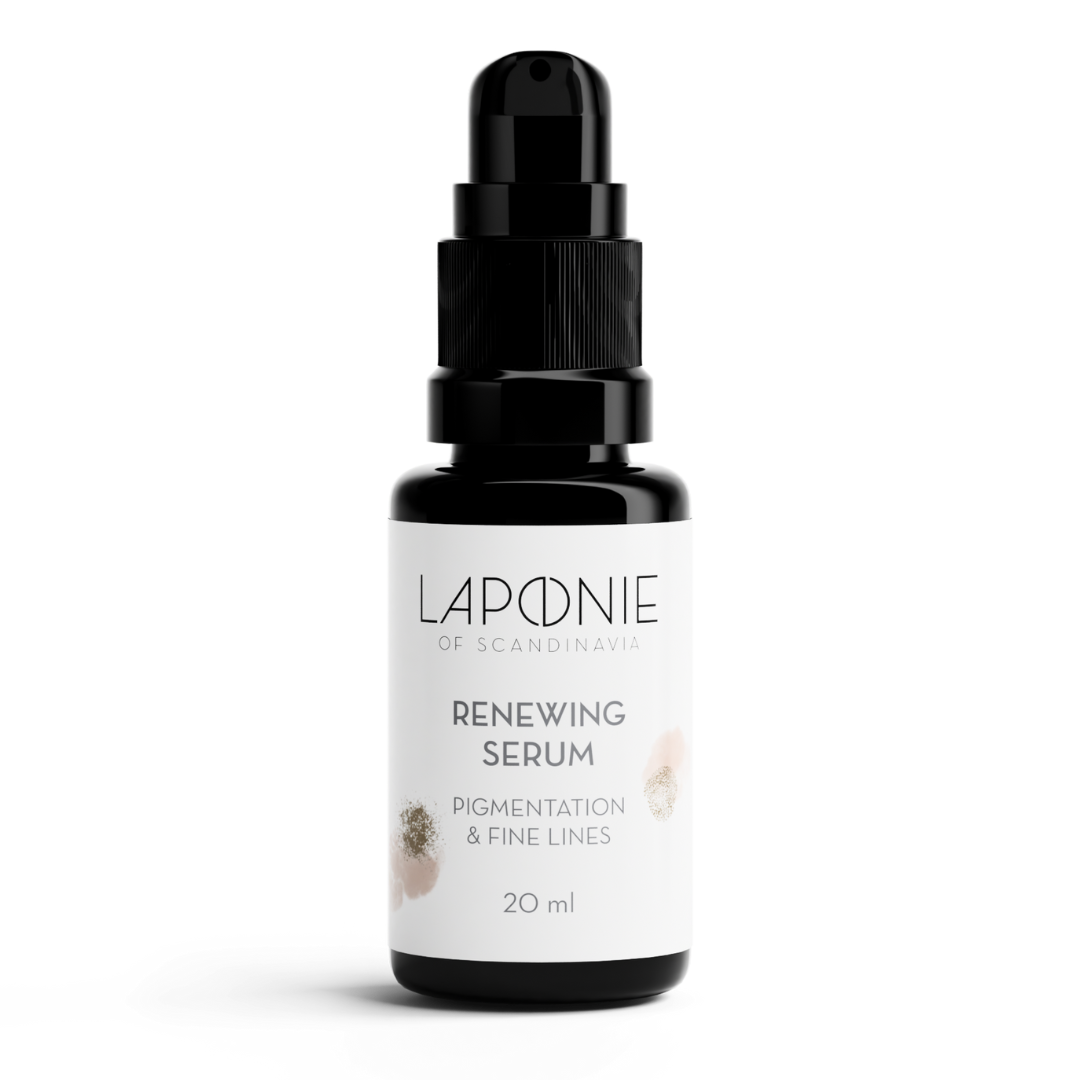
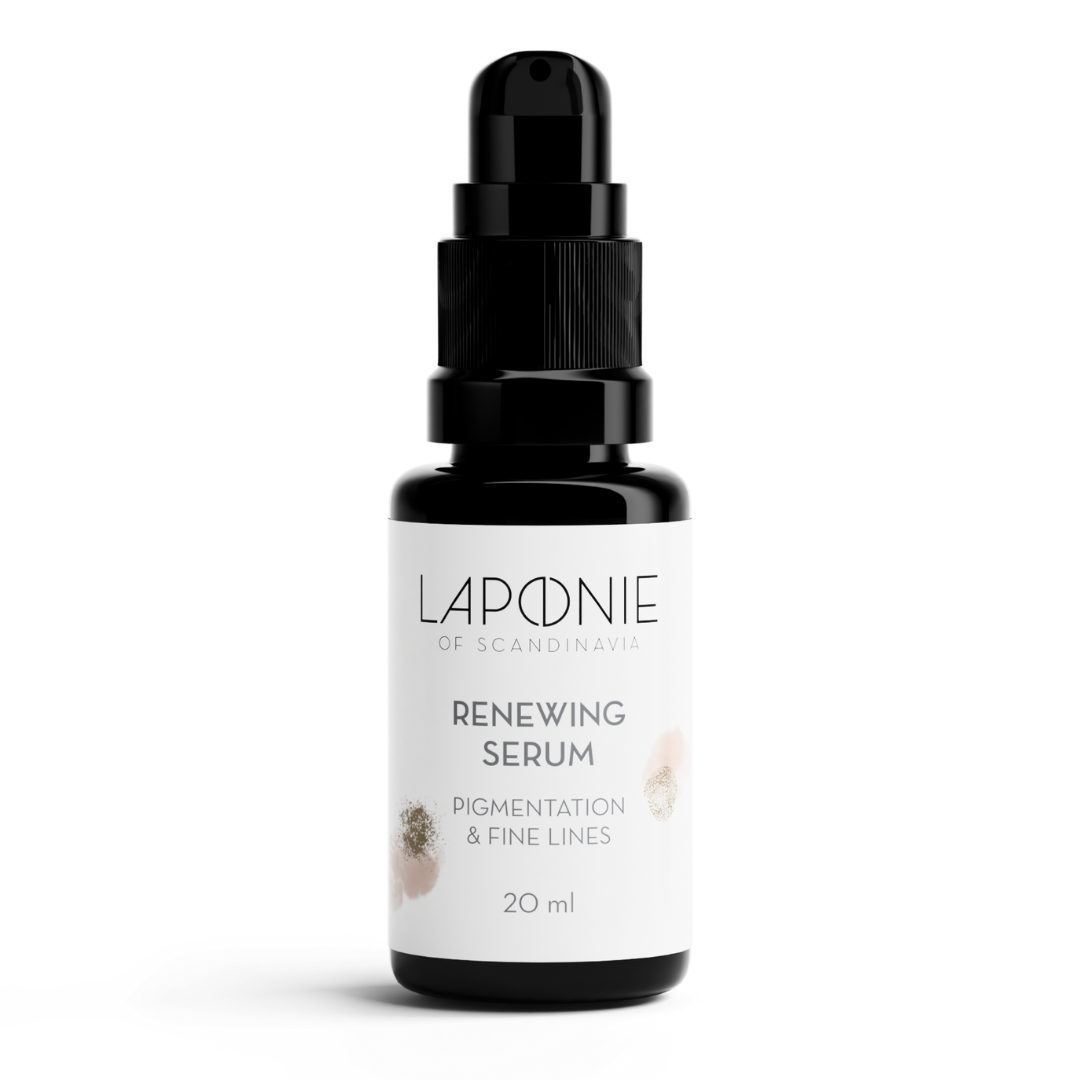
No added fragrance
No added fragrance or essential oils, floral waters or alcohol.
Formulated for sensitive & problem skin in our own lab
Our owners, CEO Kristina and cosmetic chemist Jaana, formulate all our products in our Helsinki lab, and test them on themselves - both have a long history of sensitive and problem skin.
Gentle & skin friendly preservatives
We've created a unique preservative system for the Serum, to minimise overlap with our other products, using gentle preservatives, primarily organic acids and their salt forms. Check out our ingredient section above to learn more.
Balanced pH for healthy skin
The Serum has a pH around 5.5 (healthy skin's own pH is slightly acidic, between 4.8 and 5.5) and will not upset or irritate skin.
Allergy-labelled
All our products carry the Finnish Allergy, Skin and Asthma Federation's independent Allergy-label.
A minimum of ingredients
The Serum contains just 14 ingredients. Formulated with argan oil to repair and protect, sunflower seed oil to strengthen the skin barrier, and bakuchiol and bisabolol to treat fine lines and pigmentation. Bisabolol is a well-tolerated anti-microbial agent which soothes skin and prevents inflammation. Bakuchiol is excellent for treating fine lines, congestion and breakouts. Research shows it to be as efficient as retinoids, but without the irritation often associated with them. Check out our ingredient section above to learn more.



